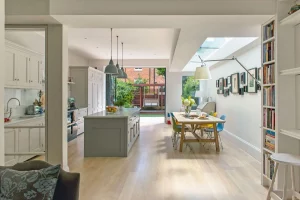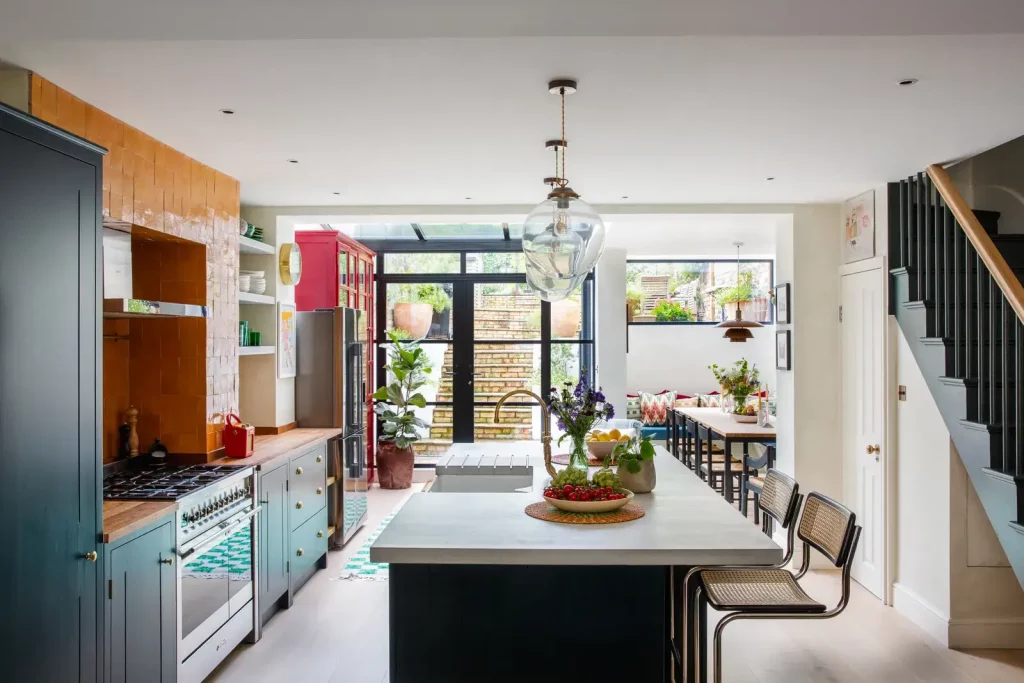Crafting digital landscapes in web design parallels the adventure of transforming physical spaces. Enhancing personal flair and creativity, renovation steps reflect one’s design aesthetic. From color scheme conceptualization to evaluating outcomes, each phase shapes an environment mirroring digital artistry. Designers discover how physical surroundings influence and harmonize with online creations, creating a holistic design experience transcending boundaries. Discover the key steps in a home renovation project that guide you through transforming your space with precision and creativity.
Key Takeaways
- Reflect on personal style preferences to infuse your unique design aesthetic.
- Gather inspiration from diverse sources to broaden your creative perspective.
- Choose materials and colors that resonate with your vision for a cohesive look.
- Implement design changes strategically, focusing on user experience and visual impact.
- Evaluate the final outcome to ensure alignment with project goals and a sense of accomplishment.
Understanding Your Design Needs
How can web designers effectively discern and articulate their specific design requirements before starting on a home renovation project? By first reflecting on their personal style preferences, gathering inspiration from diverse sources, and creating mood boards to visually represent their vision. Understanding the desired color schemes, textures, and overall ambiance will guarantee a cohesive and personalized renovation experience that resonates with their unique design aesthetic.
Planning Your Renovation Budget
When starting on a renovation project as a web designer, meticulous planning of your renovation budget is paramount to ensuring a successful and cost-effective transformation of your space. Here are three key steps to help you plan your renovation budget effectively:
- Research Costs: Gather quotes and estimates from contractors and vendors.
- Set Priorities: Identify must-have elements and allocate funds accordingly.
- Create a Contingency Fund: Plan for unexpected expenses to avoid budget overruns.
Choosing the Right Materials and Colors
In the process of renovating your space as a web designer, selecting the appropriate materials and colors plays a pivotal role in defining the aesthetic appeal and functionality of your redesigned environment. Choose materials that reflect your unique style and values, creating a cohesive and inspiring atmosphere. Colors can evoke emotions and set the tone for your space, so pick hues that resonate with your design vision to create a harmonious ambiance.

Implementing Design Changes Effectively
With a strategic approach and meticulous attention to detail, web designers can seamlessly implement design changes to elevate the user experience and overall visual impact of a website.
- Conduct a thorough audit of the current design elements.
- Prioritize changes based on user feedback and design trends.
- Utilize prototyping tools for testing and refining design modifications.
Evaluating the Final Outcome
Upon completion of the renovation steps, web designers must engage in a thorough evaluation of the final outcome to confirm that the design changes align with the project goals and objectives. This critical step guarantees that the aesthetic vision is successfully translated into the digital world, fostering a sense of accomplishment and pride in the work done. Embracing this evaluation process solidifies the designer’s connection to their creation and the project’s purpose.
Frequently Asked Questions
Can I Renovate My Home While Still Living in It?
Yes, you can renovate your home while still living in it by planning ahead, setting up designated renovation zones, and maintaining clear communication with your contractors. With proper organization and patience, you can achieve a successful renovation without disrupting your daily life.
How Long Does a Typical Home Renovation Project Take?
The length of a typical home renovation project varies based on factors like the scope of work, size of the project, and potential unforeseen challenges. On average, small projects may take a few weeks, while larger ones could span several months.
Should I Hire an Architect or a Designer for My Renovation?
When deciding between hiring an architect or a designer for your renovation project, consider your needs and budget. Architects focus on structural elements, while designers excel in aesthetics. Choose based on your project scope and desired outcomes.
What Permits or Approvals Do I Need for a Renovation?
Before starting on a renovation project, it’s essential to research and secure all necessary permits and approvals. This typically involves reaching out to your local government or building authority to guarantee compliance with regulations and codes.
How Can I Ensure My Renovation Stays Within Budget?
To guarantee your renovation stays within budget, start by creating a detailed plan outlining all expenses. Research costs of materials and labor, obtain multiple quotes, and consider potential unforeseen expenses. Regularly track spending and be flexible to adjust as needed.
Conclusion
To sum up, by following the essential renovation steps outlined in this article, web designers can bring their design aesthetic to life in a cohesive and personalized way. Understanding design needs, planning a budget, selecting materials and colors thoughtfully, implementing changes effectively, and evaluating the final outcome are key components to creating a visually stunning and user-friendly digital experience. Embrace your creativity and let your unique design style shine through in every aspect of your web design projects.

